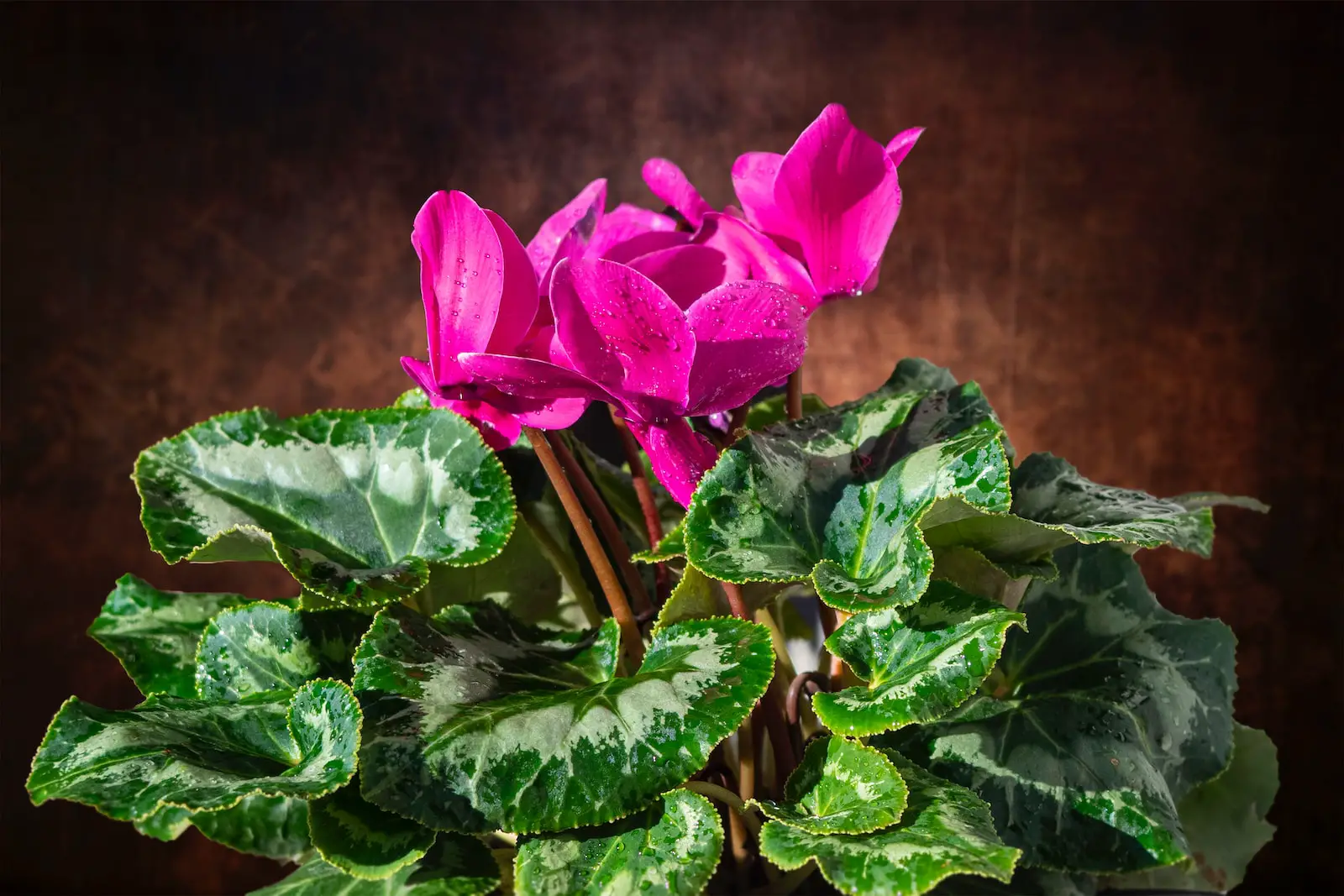Cyclamen is a genus of beautiful flowering plants known for their vibrant flowers and unique, heart-shaped leaves. These perennials are native to parts of Europe, the Mediterranean, and western Asia, and are particularly celebrated for their winter-blooming varieties. A popular choice for both indoor and outdoor gardens, Cyclamen has become a symbol of love and tenderness in many cultures.
The fascinating upswept petals of Cyclamen flowers, ranging from white, pink, red, to purple, are one of its most distinctive features. Coupled with attractive marbled foliage, the plant offers ornamental appeal all year round. There are more than 20 species of Cyclamen, and many of them are beloved by gardeners and flower enthusiasts for their unique charm.
Despite their delicate appearance, Cyclamen are known for their hardiness in the right conditions. Understanding the specific requirements of Cyclamen, from light and soil to watering and temperature, can help gardeners cultivate these beautiful plants successfully. Their care needs can vary slightly depending on whether they are grown indoors or outdoors.
| Attribute | Details |
|---|---|
| Common Names | Cyclamen |
| Botanical Name | Cyclamen spp. |
| Family | Primulaceae |
| Plant Type | Perennial |
| Mature Size | 2-6 inches tall, 6-9 inches wide |
| Sun Exposure | Partial shade |
| Soil Type | Well-drained, humus-rich soil |
| Hardiness Zones | 5-9 (depending on species) |
| Native Area | Europe, Mediterranean, Western Asia |
Cyclamen Care
Caring for Cyclamen requires attention to their specific needs, especially regarding light, water, and soil. While not exceptionally demanding, they thrive in environments that mimic their native woodland habitats.
Indoor Cyclamen, typically Cyclamen persicum, prefer cool temperatures and bright, indirect light. They need consistent moisture but should not be over-watered. Outdoor varieties require similar care but may be more tolerant of variations in conditions.
Light Requirement for Cyclamen
Cyclamen thrive in bright but indirect light. Direct sunlight can cause leaf burn and may lead to other issues. For outdoor plants, a shaded or partially shaded area is ideal, while indoor plants benefit from filtered sunlight.
Soil Requirements for Cyclamen
Well-drained soil rich in organic matter is essential for healthy Cyclamen. It should retain moisture without becoming soggy. Adding compost or well-rotted manure can improve the soil’s quality.
Water Requirements for Cyclamen
Cyclamen need consistent but controlled watering. Over-watering can lead to rot, while under-watering may cause wilting. It is best to water the plant at the base to avoid wetting the leaves and crown.
Temperature and Humidity
Cyclamen prefer cool temperatures, ranging from 50-65°F (10-18°C). High humidity levels are beneficial but not essential. Indoor plants may benefit from occasional misting.
Fertilizer
Feeding Cyclamen with a balanced liquid fertilizer every 3-4 weeks during the growing season can support healthy growth. Avoid over-fertilizing, as this can cause more foliage and fewer flowers.
Pruning Cyclamen
Pruning is typically not necessary, but dead or yellowing leaves and spent flowers can be removed to encourage new growth and maintain appearance.
Propagating Cyclamen
Propagation is usually done through division of tubers. It requires careful handling, as Cyclamen tubers are delicate and can be easily damaged.
How To Grow Cyclamen From Seed
Growing Cyclamen from seed is possible but requires patience, as germination can be slow. Sow seeds in a mix of perlite and peat moss, and keep at a constant temperature of around 60°F (15°C).
Common Pests & Plant Diseases
Spider Mites
These pests may affect indoor Cyclamen, leading to weak growth.
Gray Mold
Caused by the fungus Botrytis, it can affect leaves and flowers if humidity is too high.
Common Problems With Cyclamen
Yellowing Leaves
Caused by over-watering or poor drainage.
Failure to Flower
Insufficient light or over-fertilization may result in a lack of flowers.
Pro Tips
- Water from the base to avoid rotting.
- Keep in a cool location with bright, indirect light.
- Avoid over-watering and over-fertilizing.
- Remove spent flowers to encourage new blooms.
- Be patient if growing from seed; germination can be slow.




